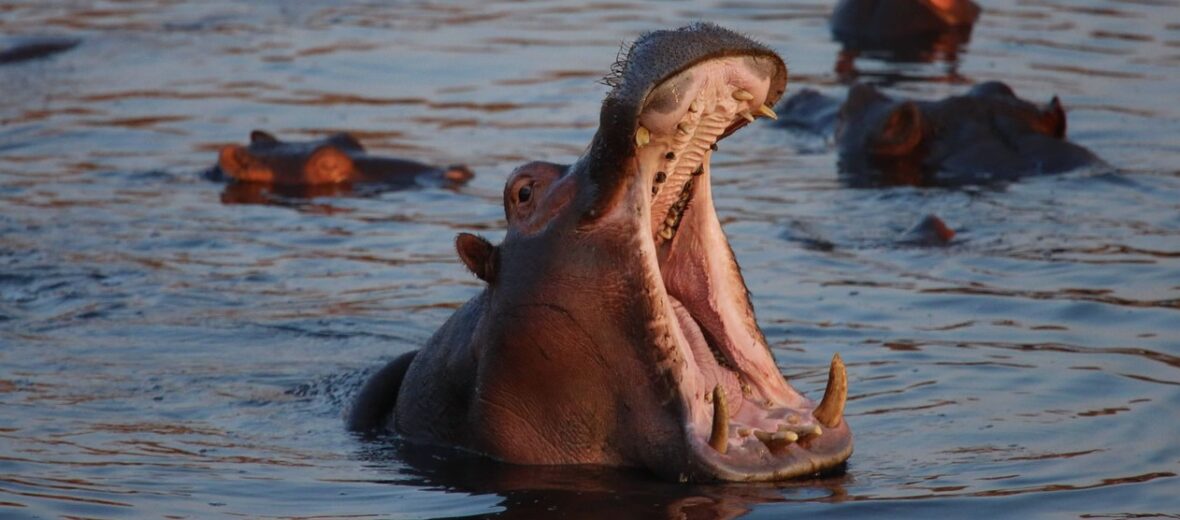
Touted for their size and aggressiveness, the hippo is considered one of the most dangerous animals in Africa. The hippo is responsible for more human fatalities in Africa than any other large animal. It’s estimated that approximately 2,900 people are killed by these mammals annually. That being said though, the females are very attentive and loving to their young. But oh my gored… just don’t get between them and their calf! The IUCN lists the African hippo as Vulnerable. This is due to habitat destruction and climate change.
First the Stats…
Scientific Name: Hippopotamus amphibius
Weight: Male: Up to 9,900+ lbs.
Length: Up to 17 feet
Height: Up to 4.9 feet, at the shoulder
Lifespan: Up to 50 years
Now on to the Facts!
1.) Hippopotamuses give birth in water.
2.) The closest relatives of hippos are cetaceans like whales, dolphins, and manatees.
3.) Hippos might look a little on the chubby side, but they are capable of outrunning a human. A hippo can run up to 19 mph!
4.) The bite strength of a hippo is up to 2,000 lbs. per square inch!
5.) A gathering of hippos in known as a pod, herd, dale, or bloat.
But wait, there’s more on the hippo!
6.) A male hippo is called a bull and a female is called a cow. A baby is called a calf.
7.) A hippopotamus will spend it’s lifetime eating almost exclusively aquatic grass. They consume about 90 lbs. of grass a night.
Did you know…?
The name hippopotamus means river horse.
8.) There are 5 known hippopotamus subspecies.
9.) Hippos only live in Africa.
10.) A Hippopotamus can open its mouth almost 180 degrees! Look at those tusks and teeth!
But wait, there’s still more on the hippo!
11.) They can hold their breath for up to 5 minutes.
Did you know…?
Hippos sleep fully submerged. They automatically float to the surface every 5 minutes, while still asleep, to breathe.
12.) These beasts secrete a pinkish sweat that covers their bodies. This acts both as a sunscreen and a disease repellent.
13.) Hippos mate every 2 years and they do so in the water.
14.) The hippo is polygamous (males mate with several females) and the male canmate with up to 10 females a season.
Now a Short Hippo Video!
Also, check out the Critter Science YouTube channel. Videos added frequently!
Want to suggest a critter for me to write about? Let me know here.




Leave a Reply